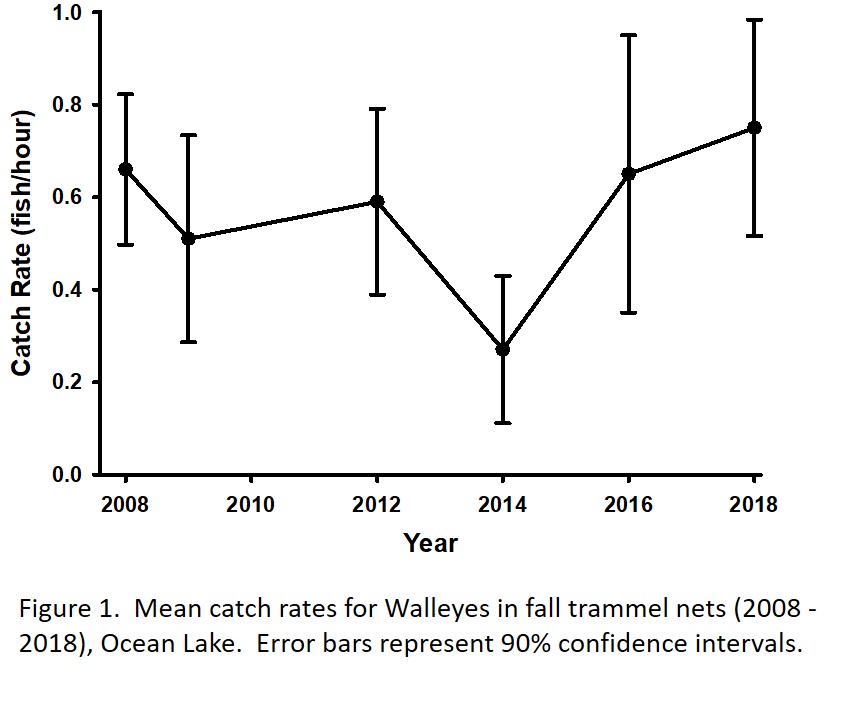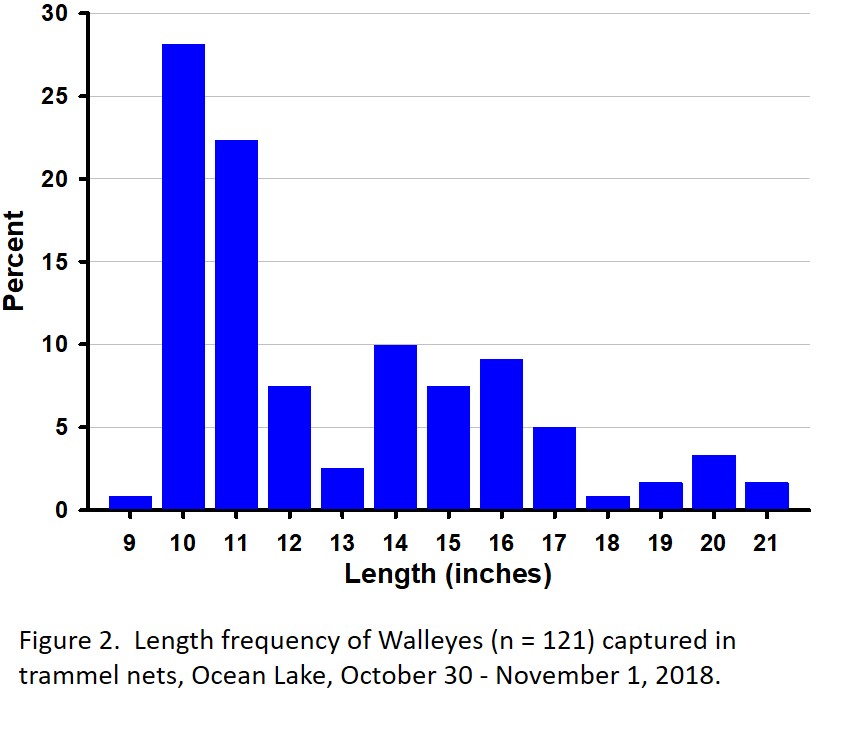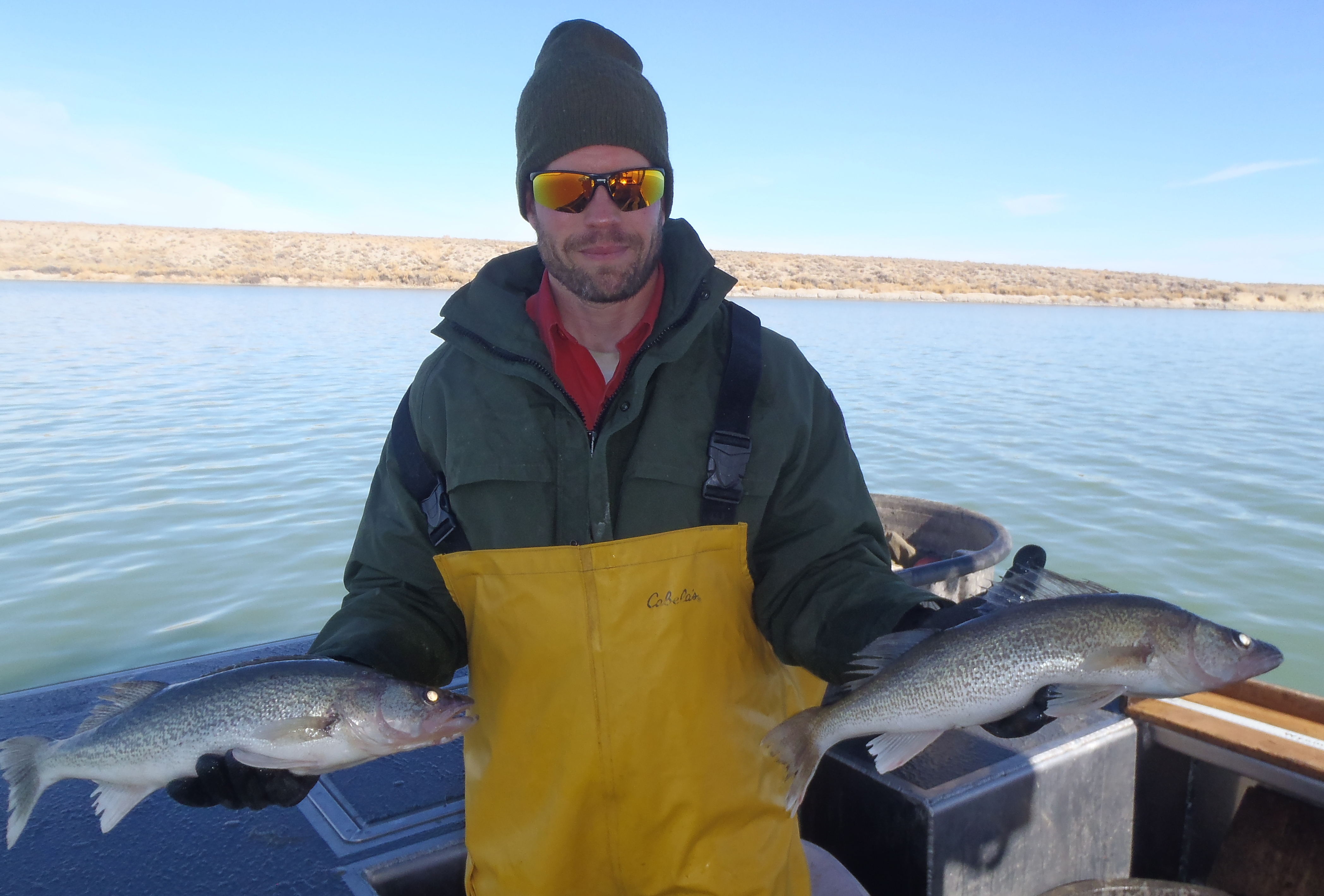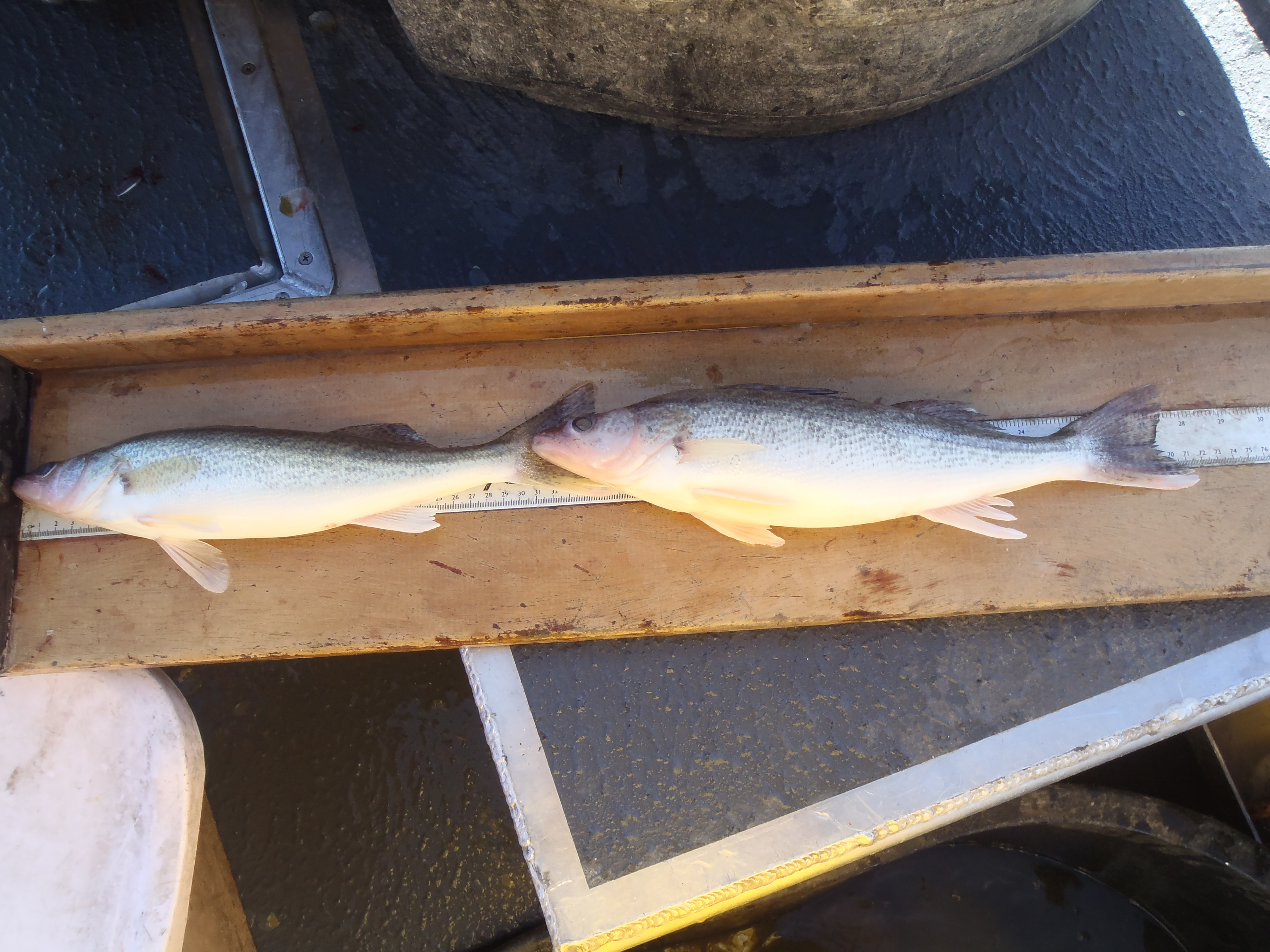Why aren't the walleye biting at Ocean Lake?
The Wyoming Game and Fish Department has been hearing from Ocean Lake ice anglers who, despite high walleye abundance in 2018, are having a difficult time catching them this winter. Game and Fish biologists are attributing this to high numbers of forage fish and fat, healthy walleyes.
Walleyes captured on the Lake in 2018 were found to have a high relative weight value of 95. Relative weight is a measure of body condition, or how “fat” a fish is. The high relative weight value is suggestive of high numbers of forage fish, decreasing the chances of walleyes biting a baited line. Additionally, fat, healthy fish may not spend as much time actively feeding.
 Each year, Game and Fish, stocks approximately 320,000, 2-3” fingerling walleye into Ocean Lake. Fall 2018 netting surveys showed good survival of walleyes stocked in recent years, as fisheries biologists obtained the highest catch rate since 2008 (Figure 1). Length and age data showed high numbers of age-1 (9 to 12 inches), age-2 and age-3 (14 to 17 inches), and age-7 (19 to 21 inches) fish (Figure 2).
Each year, Game and Fish, stocks approximately 320,000, 2-3” fingerling walleye into Ocean Lake. Fall 2018 netting surveys showed good survival of walleyes stocked in recent years, as fisheries biologists obtained the highest catch rate since 2008 (Figure 1). Length and age data showed high numbers of age-1 (9 to 12 inches), age-2 and age-3 (14 to 17 inches), and age-7 (19 to 21 inches) fish (Figure 2).

Another notable result from 2018 netting was the absence of Northern Pike. Two Northern Pike have been captured by Ocean Lake anglers (one in June 2014 and another in November 2015), causing concern that an undesirable top predator could affect the fishery and possibly spread within the Wind/Bighorn basin. The absence of Northern Pike in netting operations and angler reports since 2015 is fortuitous and indicates density is currently low or Northern Pike are no longer present. However, continued monitoring will be necessary to determine if a Northern Pike population establishes in Ocean Lake. Anglers are reminded that any Northern Pike captured must be immediately killed and not released alive. Additionally, fisheries biologists would appreciate anglers reporting any Northern Pike captured in Ocean Lake to the WGFD Lander Regional Office.
Picture Captions. The WGFD found high numbers of Walleyes in Ocean Lake during a November 2018 netting operation. Most walleyes were in the 10- to 12-inch (age-1) and 14-to 17-inch (age-2 and age-3; see picture above) length classes.


Walleyes captured on the Lake in 2018 were found to have a high relative weight value of 95. Relative weight is a measure of body condition, or how “fat” a fish is. The high relative weight value is suggestive of high numbers of forage fish, decreasing the chances of walleyes biting a baited line. Additionally, fat, healthy fish may not spend as much time actively feeding.
Another notable result from 2018 netting was the absence of Northern Pike. Two Northern Pike have been captured by Ocean Lake anglers (one in June 2014 and another in November 2015), causing concern that an undesirable top predator could affect the fishery and possibly spread within the Wind/Bighorn basin. The absence of Northern Pike in netting operations and angler reports since 2015 is fortuitous and indicates density is currently low or Northern Pike are no longer present. However, continued monitoring will be necessary to determine if a Northern Pike population establishes in Ocean Lake. Anglers are reminded that any Northern Pike captured must be immediately killed and not released alive. Additionally, fisheries biologists would appreciate anglers reporting any Northern Pike captured in Ocean Lake to the WGFD Lander Regional Office.
Picture Captions. The WGFD found high numbers of Walleyes in Ocean Lake during a November 2018 netting operation. Most walleyes were in the 10- to 12-inch (age-1) and 14-to 17-inch (age-2 and age-3; see picture above) length classes.
307-332-2688
